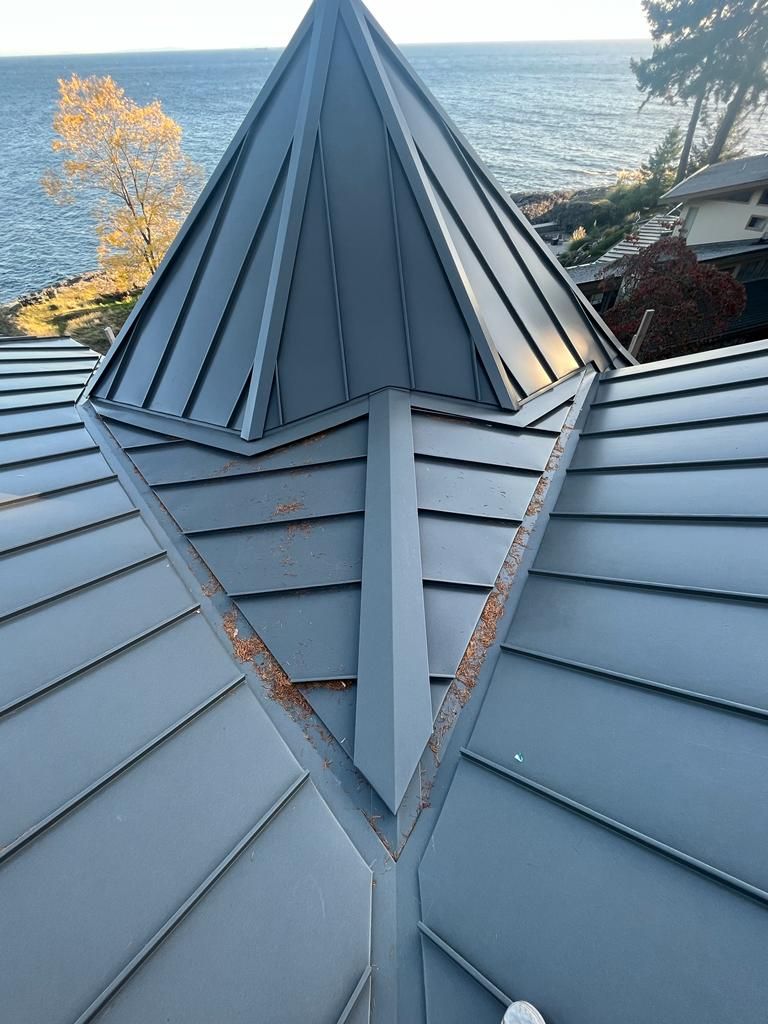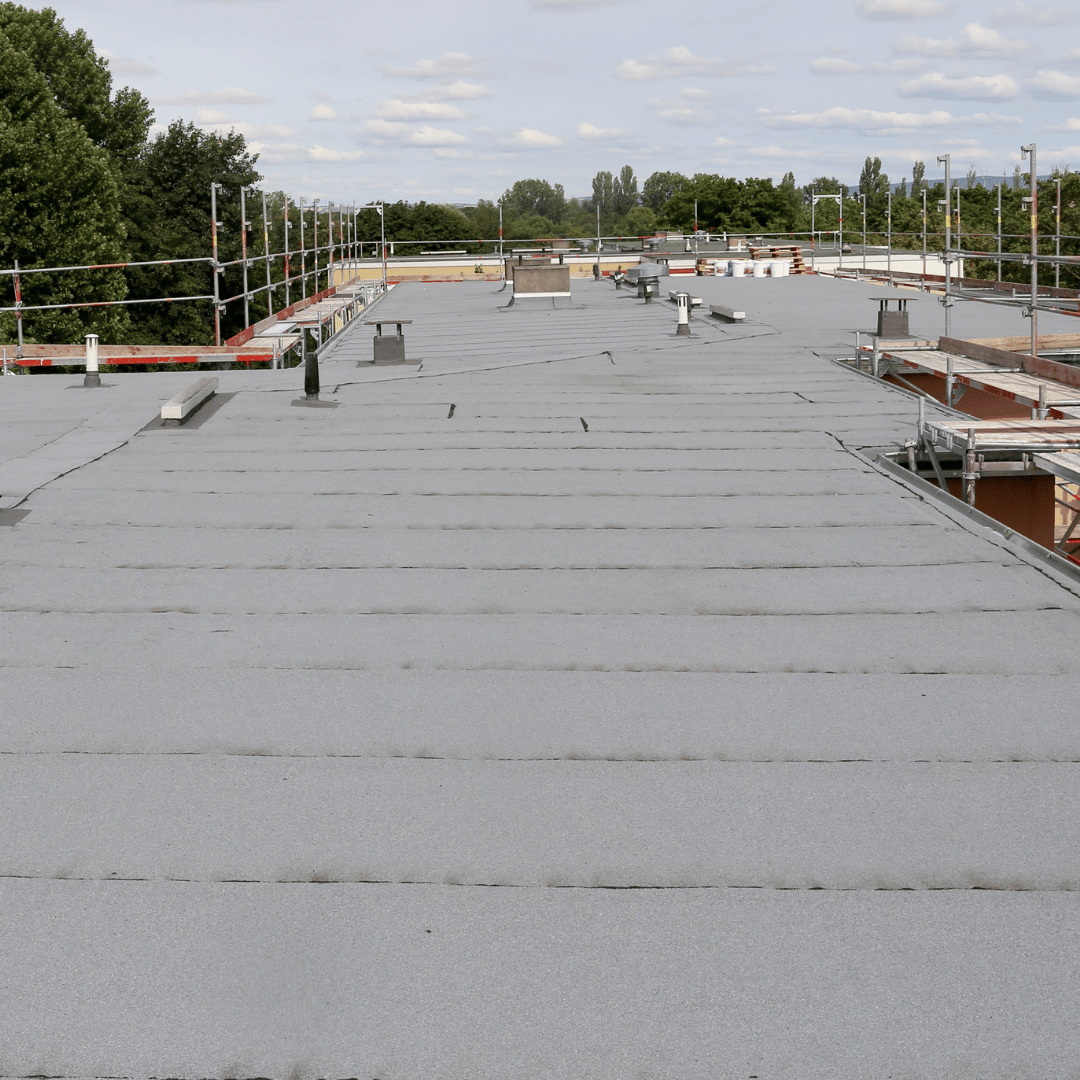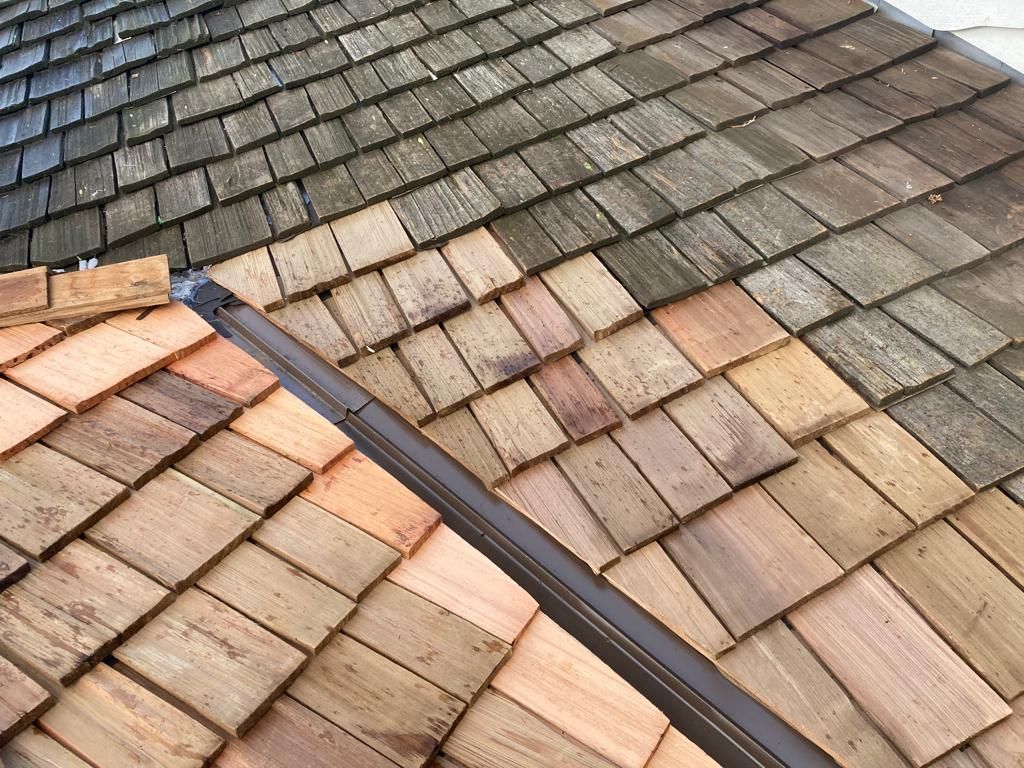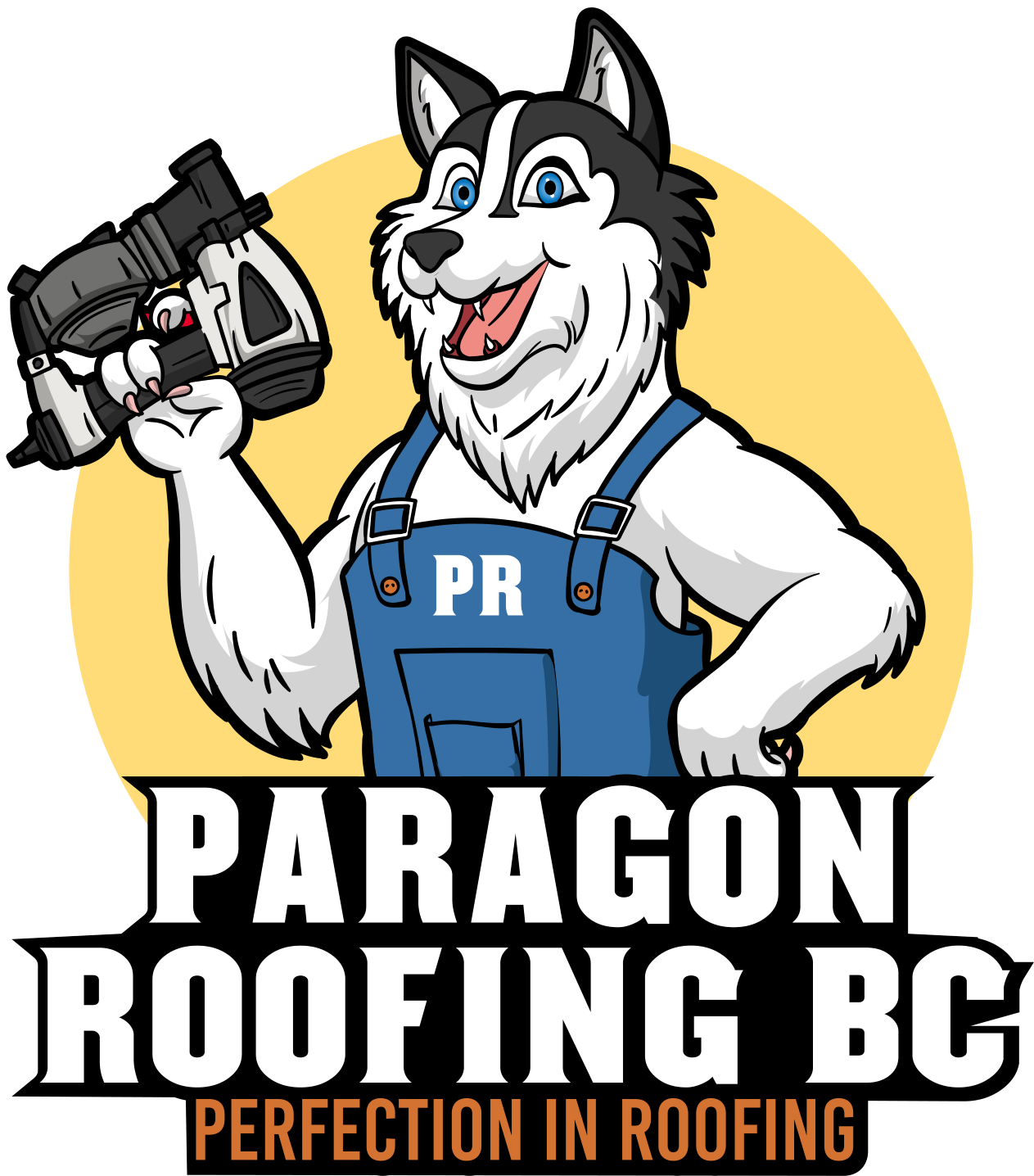How Coastal Weather Affects Vancouver Roofing: Paragon Roofing BC Reveals Key Maintenance Tips
Curious how the unique weather around our beloved West Coast can impact roofing in Vancouver, let's find out!
I’ve spent years patching, replacing, and maintaining roofs across Vancouver and the rest of the Lower Mainland. Today, I’m here to share insights on how our coastal weather impacts roofing in Vancouver BC and what you can do to keep your home protected.
Summary
In a nutshell, Vancouver’s coastal weather throws unique challenges at your roof—rainy seasons, salt-laden air, windstorms, temperature swings, and relentless moisture. To prevent issues such as leaks, moss growth, shingle damage, and energy inefficiency, regular maintenance is absolutely critical. Below, I’ll explain exactly how these weather conditions affect roofs, followed by detailed, actionable maintenance tips you can use to prolong your roof’s life and protect your investment.
The Impact of Vancouver’s Coastal Climate
1. High Levels of Rainfall
One glance out your window in the fall or winter and it’s no secret that Vancouver is wet—sometimes it feels like the rain never ends. Because of this high moisture environment, roofs here face constant exposure to water. Over time, if water finds any weak spots—like cracked shingles, loose flashing, or worn seals around vents—it can seep in, leading to leaks. Even the smallest gap can become a big headache.
Moisture is also a breeding ground for mold, algae, and moss, which can deteriorate roofing materials and create slippery surfaces. If you’ve ever driven through Surrey or Delta and noticed roofs covered in green moss, that’s the real-world effect of our damp climate. Moss, if left unchecked, can wedge between shingles, lifting them and allowing water to penetrate deeper layers.
How This Answers the Question: Understanding our high rainfall helps you see why regular inspections, proper flashing, and swift repairs are essential for roofing in Vancouver BC. Dealing with consistent downpours means you need to be proactive about sealing and clearing any water-intrusion points.
2. Salt-Laden Air
Living by the Pacific Ocean is amazing—fresh sea breezes, scenic views, and mild winter weather. But along with that ocean air comes salt, and salt can be corrosive to certain roofing materials and metal fixtures (like flashing, gutters, and nails). Over time, this corrosion might weaken your roof’s structural components and shorten the overall lifespan of some materials.
It’s easy to overlook salt damage, particularly if you’re not on the coast proper. However, areas across Metro Vancouver and parts of the Lower Mainland do experience some level of salt in the air. Combine that with regular humidity, and you’ve got an environment that accelerates wear on metal elements.
How This Answers the Question: Acknowledging salt’s corrosive nature clarifies why frequent checks for corrosion on roof elements, especially metals, is so important. This ensures your roof remains watertight and robust against coastal weather challenges.
3. Windstorms and Strong Gusts
We might not deal with hurricane-level storms, but Vancouver still faces plenty of windy days—especially from autumn to spring. These gusts can loosen shingles, blow debris onto roofs, and even snap tree branches. If your roof already has slightly damaged shingles or if your gutter system is weak, strong winds could exacerbate these issues.
Windstorms also drive rainwater sideways. Instead of water flowing in the usual downward direction, it can be forced into small cracks and crevices on vents, chimneys, or skylights. Once water breaches these openings, you’re at risk of leaks and water damage in your attic or ceiling.
How This Answers the Question: Knowing how wind carries moisture into hidden areas underlines the importance of securing loose shingles and sealing any cracks or flashing. Regularly checking for wind damage ensures that small issues don’t evolve into big, expensive repairs.
4. Temperature Fluctuations and Freeze-Thaw Cycles
Vancouver winters are usually milder than the rest of Canada, but we’re no strangers to chilly nights followed by rainy days. This leads to freeze-thaw cycles—water seeps into small gaps in your roofing materials, freezes, expands, and then thaws out again. Each cycle widens those gaps, eventually causing cracks, splits, or other damage.
Although we might not get the same levels of snow as the rest of the country, the occasional snowfall combined with temperature swings can still put stress on roofs. In some spots (like higher elevations in North Vancouver), roofs deal with heavier snow loads and more intense freeze-thaw conditions.
How This Answers the Question: Realizing the role of freeze-thaw cycles in damaging roofing materials highlights why sealing cracks promptly and ensuring proper insulation are vital. By staying aware, you can guard against leaks and shingle damage before they occur.
5. UV Exposure in Summer
Yes, it rains a lot, but we also get those bright, sunny stretches—especially in the height of summer. Prolonged exposure to UV rays can degrade roofing materials, causing shingles to crack, curl, or lose their protective granules. That’s why, even if you love our occasional stretch of perfect weather, it’s worth remembering your roof might be taking a beating from the sun.
Sun damage becomes more significant if your roof isn’t well-maintained. For instance, dark patches or missing granules on asphalt shingles lead to faster degradation because the underlying material is more vulnerable to heat.
How This Answers the Question: Understanding UV exposure’s role in roof wear underscores the need for inspections after sunny seasons. Spotting any curling or cracked shingles early lets you replace them and maintain a watertight shield over your home.
Key Maintenance Tips for Roofing in Vancouver BC
Now that you understand the primary ways coastal weather in Vancouver can impact your roof, let’s dive into the practical steps. Regular maintenance can make all the difference in keeping your home safe and dry—plus, it can help you avoid costly roof repairs or even premature replacement.
1. Schedule Regular Roof Inspections
A consistent inspection schedule (ideally once or twice a year) is your first line of defense against the wear and tear caused by our coastal climate. During inspections, check for:
- Loose or missing shingles: Even a small tear can let water in.
- Worn or corroded flashing: Metal around chimneys, skylights, or vents can corrode due to salt and moisture.
- Moss or algae growth: Green spots often indicate moisture build-up.
- Leaking or sagging gutters: If your gutters don’t drain water properly, your roof’s edges might suffer water damage.
Answering the Question: Routine inspections pinpoint damage at its earliest stage—before Vancouver’s frequent rains turn a minor issue into a full-blown leak. This is critical in a wet, coastal environment where small vulnerabilities can escalate quickly.
2. Keep Gutters and Downspouts Clear
I can’t stress enough how important gutters are for roof health. They direct rainwater away from your home, preventing water from pooling on your roof or around your foundation. But if they’re clogged with leaves, branches, or other debris—especially after autumn storms in Vancouver—they can overflow. That overflow leads to water seeping under your shingles or pooling around your home’s foundation.
- Tip: Clean your gutters at least twice a year, typically once after the leaves fall and then again in late spring.
- Bonus: Consider installing gutter guards to minimize leaf buildup if your home is in a heavily treed area like North Vancouver or Coquitlam.
Answering the Question: Keeping gutters clean ensures effective water drainage, preventing the rainy coastal weather from turning into internal roof leaks or water damage.
3. Address Moss and Algae Promptly
You’ve probably seen that classic green fuzz on roofs around the Lower Mainland. It might give a cozy, woodland vibe, but trust me, it’s no friend to your shingles. Moss holds moisture against your roof’s surface, fostering rot and deterioration. Meanwhile, algae can create unsightly dark streaks and reduce your roof’s energy efficiency by retaining heat.
- Safe Removal: Use a dedicated roof-cleaning solution and a soft brush. Avoid power washing, as it can strip away protective shingle granules.
- Prevention: Trim back nearby branches to let more sunlight in. Moss and algae thrive in damp, shaded environments.
Answering the Question: Dealing with moss and algae is crucial in Vancouver’s damp climate. By removing them, you preserve shingle integrity and cut down on moisture-related damage.
4. Ensure Proper Roof Ventilation and Insulation
Proper ventilation in your attic helps regulate temperature, reducing the risk of condensation buildup that can lead to mold or rot. Insulation prevents warm, moist indoor air from seeping into cold roof spaces, where it can condense and create water droplets on the underside of your roof deck.
- Check Attic Vents: Make sure ridge vents, soffit vents, and any other ventilation components aren’t blocked by insulation or debris.
- Inspect Insulation: The right level of insulation keeps your attic at an even temperature, protecting shingles from heat damage in the summer and reducing the freeze-thaw cycle in winter.
Answering the Question: Coastal weather can bring rapid temperature changes, so balanced ventilation and insulation help your roof endure these fluctuations without developing leaks or rot.
5. Monitor and Replace Damaged Shingles Quickly
Shingles can be damaged by UV rays, high winds, heavy rainfall, or pesky moss. If you see curling edges, cracks, or missing granules, it’s time to replace them. Small repairs might seem like a hassle, but they can stave off bigger problems, like widespread leaks or a compromised roof deck.
- DIY or Pro?: If you’re comfortable and the damage is minimal, you might handle small shingle replacements yourself (taking all necessary safety precautions, of course). However, if there’s extensive damage or you’re unsure, consulting professional roofers in Vancouver is wise.
Answering the Question: Replacing damaged shingles is a direct response to the harsh coastal elements. It seals up vulnerabilities and preserves the roof’s protective barrier.
6. Combat Salt Corrosion on Metal Components
Salt air is sneaky—it can corrode roof flashing, nails, and other metal elements without you noticing until there’s a real problem. That corrosion often creates weak points where water seeps in.
- What to Look For: Rust, discoloration, or pitting on flashing, vents, and metal fasteners.
- How to Handle: Light surface rust can be removed with a wire brush and treated with a rust-inhibiting primer and paint. If corrosion is extensive, consider replacing the component altogether.
Answering the Question: Checking and maintaining metal elements directly addresses salt corrosion. Staying on top of rust prevention keeps your roof sealed against constant damp, salty air.
7. Regularly Trim Overhanging Branches
If your home sits under Vancouver’s tall evergreens or big maples, you’ve probably dealt with branches dropping needles or leaves on the roof. Overhanging limbs can scratch roofing materials in strong winds or funnel water exactly where you don’t want it. The shade they cast also encourages moss and algae growth.
- Tip: Keep branches pruned back at least a few feet from the roof’s surface. This will allow for airflow and reduce debris accumulation.
- Safety Note: Tree trimming can be risky—if you’re not comfortable, hiring an arborist or trained professional might be best.
Answering the Question: Controlling tree growth is pivotal in a region where damp conditions favor moss growth and where wind can fling branches onto roofs. This proactive step keeps your roof in top shape despite Vancouver’s ever-growing greenery.
8. Look for Ponding or Pooling Water
Certain areas of your roof might be prone to pooling after heavy rain—particularly if there’s an issue with the roof’s slope or if debris blocks normal drainage paths. Standing water can degrade materials quickly and invite pesky leaks. Plus, if water freezes (during those cold snaps we sometimes get in Delta or Surrey), it can cause even bigger problems.
- Flat or Low-Slope Roofs: If you have a flat roof or a very low slope, check for water accumulation after rainstorms. Ensure drains, scuppers, or internal gutter systems aren’t obstructed.
- Long-Term Solutions: Sometimes ponding is a design issue. In these cases, adding additional drains or adjusting the slope may be necessary.
Answering the Question: Identifying and managing pooling water directly addresses the most immediate threat of leaks in a rainy climate. A well-draining roof stands up better to the onslaught of moisture we get.
9. Choose Roofing Materials Suited for Coastal Conditions
If you’re in the market for a new roof or a full replacement, choosing materials designed to withstand Vancouver’s coastal environment is crucial and installed by quality Vancouver roofers. Some shingles resist algae growth better, while others offer improved wind resistance. Metal roofs with certain coatings handle salt corrosion more effectively than traditional uncoated metals.
- Asphalt Shingles: Look for algae-resistant or fiberglass-based shingles for durability.
- Metal Roofing: Consider aluminum or coated steel, which can stand up better to salt-laden air.
- Cedar Shakes: They’re beautiful and fit the West Coast aesthetic, but require consistent maintenance to prevent moisture and moss issues.
Answering the Question: Material choice is a direct response to the question of coastal weather effects. Using robust, weather-appropriate options reduces the need for constant repairs and extends your roof’s life.
10. Know When to Seek Professional Help
I’m all for teaching homeowners the basics—after all, I believe knowledge is power. But sometimes, you reach a point where calling professional roofers in Vancouver BC makes more sense than tackling a risky, complex job on your own. If you notice sagging, widespread leaks, or significant damage from a big storm, it’s safer (and often cheaper in the long run) to get a full assessment from an experienced roofing contractor.
- Emergency Situations: After serious windstorms or severe leaks, bringing in a pro ensures that hidden structural issues don’t go unnoticed.
- Warranty and Insurance: Certain roofing materials come with warranties that require professional installation or repairs. Plus, an official inspection might be necessary for insurance claims.
Answering the Question: Knowing when it’s time to call an expert is part of preventive maintenance. In a coastal climate, small problems can spiral quickly, so timely professional intervention can save you from extensive (and expensive) issues.
Practical Action Steps and Advice
- Mark Your Calendar: Set reminders for biannual inspections—one after the rainy season (to check for damage) and another before it starts (to prepare).
- Watch the Weather Reports: If a big storm is forecast, secure loose items around your property, ensure gutters are clear, and be prepared to check your roof afterward.
- Document Everything: Use your phone to snap pictures during inspections so you can spot changes over time.
- Stay Safe: If you do any minor repairs or inspections yourself, invest in proper safety equipment—slip-resistant shoes, a reliable ladder, and a harness if needed.
Answering the Question: These action steps tie directly to dealing with coastal weather issues by setting a proactive routine and ensuring you catch problems early.
Additional Notes on Vancouver’s Unique Climate
Living in the Lower Mainland means you get a little bit of everything—downpours, ocean breezes, occasional snow, and bursts of glorious summer sunshine. Your roof must handle each of these conditions seamlessly. That’s why the best approach is consistent care rather than waiting for something to go wrong.
- Wet Springs and Falls: Often the heaviest rainfall. Extra vigilance about leaks, moss, and gutter clogs is essential.
- Mild Winters: Not as brutally cold as the Prairies, but still prone to freeze-thaw cycles.
- Bright Summers: Great for the backyard BBQ, but watch for UV damage.
Answering the Question: By acknowledging the year-round weather variations, you can tailor your maintenance schedule to the times when it’s most beneficial.
That’s the scoop on roofing in Vancouver BC and how to manage the challenges our coastal weather throws at us. Regular inspections, timely repairs, and attention to detail are the secrets to a long-lasting roof in this rain-soaked, salt-sprayed paradise we call home.
Final Summary
- Vancouver’s Coastal Climate: Brings heavy rain, salt-laden air, windstorms, and temperature swings that can damage roofs if not regularly maintained.
- Key Maintenance Practices: Include routine inspections, gutter cleaning, moss control, ventilation checks, and prompt shingle replacements.
- Addressing Coastal Challenges: Salt corrosion on metal components, freeze-thaw cycles, and UV rays all demand proactive care.
- Material Choice: Selecting shingles or metal roofing suited for damp, windy, and salty conditions adds longevity to your roof.
- Professional Insight: Sometimes, calling in the pros is the smartest move, especially after major storms or if you notice significant damage.
If you keep these tips in mind, your roof will stand up to Vancouver’s coastal weather far more effectively. I’m Harman from Paragon Roofing BC, wishing you a sturdy, leak-free roof and plenty of dry days ahead—even if the forecast says otherwise! Stay safe out there, and remember: a little prevention goes a long way in keeping your home comfortable, secure, and ready for whatever our local weather decides to throw at us next.
Why does Vancouver’s coastal weather affect roofs so much?
Our region’s consistent rainfall, salty ocean air, and occasional temperature swings create the perfect environment for corrosion, moss growth, and shingle wear—making proactive maintenance essential.
What are the earliest signs of water damage on a roof?
Look for discolored ceilings, damp attic insulation, or musty odors. Outside, keep an eye out for dark patches on shingles, curling edges, and loose flashing around vents or chimneys.
How often should I clean my gutters in Vancouver BC?
Generally, it’s best to clear them twice a year—once after the leaves fall and again in spring. Heavy storms or large nearby trees might require more frequent checks.
Can moss or algae really damage my roof?
Absolutely. Moss traps moisture against shingles, speeding up deterioration and increasing leak risks. Algae creates dark streaks and can reduce energy efficiency.
Should I worry about salt corrosion if I don’t live right on the coast?
Yes. Even homes further inland can still experience salt-laden air, especially during windy periods, so keep an eye on metal components like flashing and gutters.
Are certain roofing materials better for Vancouver’s rainy climate?
Yes. Asphalt shingles with algae resistance, metal roofing with protective coatings, and well-maintained cedar shakes are all smart options, but each requires different care.
What’s the freeze-thaw cycle, and why does it matter?
Water seeps into small gaps in shingles or flashing, freezes, expands, then thaws. Repeated cycles widen gaps and cracks, leading to leaks if left unchecked.
How do I deal with windstorm damage right away?
After a big storm, inspect for loose or missing shingles and check gutters for debris. Secure small issues promptly to prevent further water intrusion.
Is it safe to handle minor repairs myself?
Simple fixes like replacing a shingle can be manageable if you’re comfortable with heights and safety gear. For significant damage, or if you’re unsure, call a qualified roofer.
Is professional roof inspection really worth it?
Absolutely. Experienced roofers spot hidden trouble areas you might miss, especially in a place like Vancouver where extra moisture makes early detection key.

Our Roofing Blog
Have more questions about roofing?
Check out our FAQs or give us a call today to speak to an expert roofer in Vancouver Lower Mainland, BC. We're here to help our neighbours make educated decisions about their roof. For our team, we value helping clients save money while making their roofs last.




